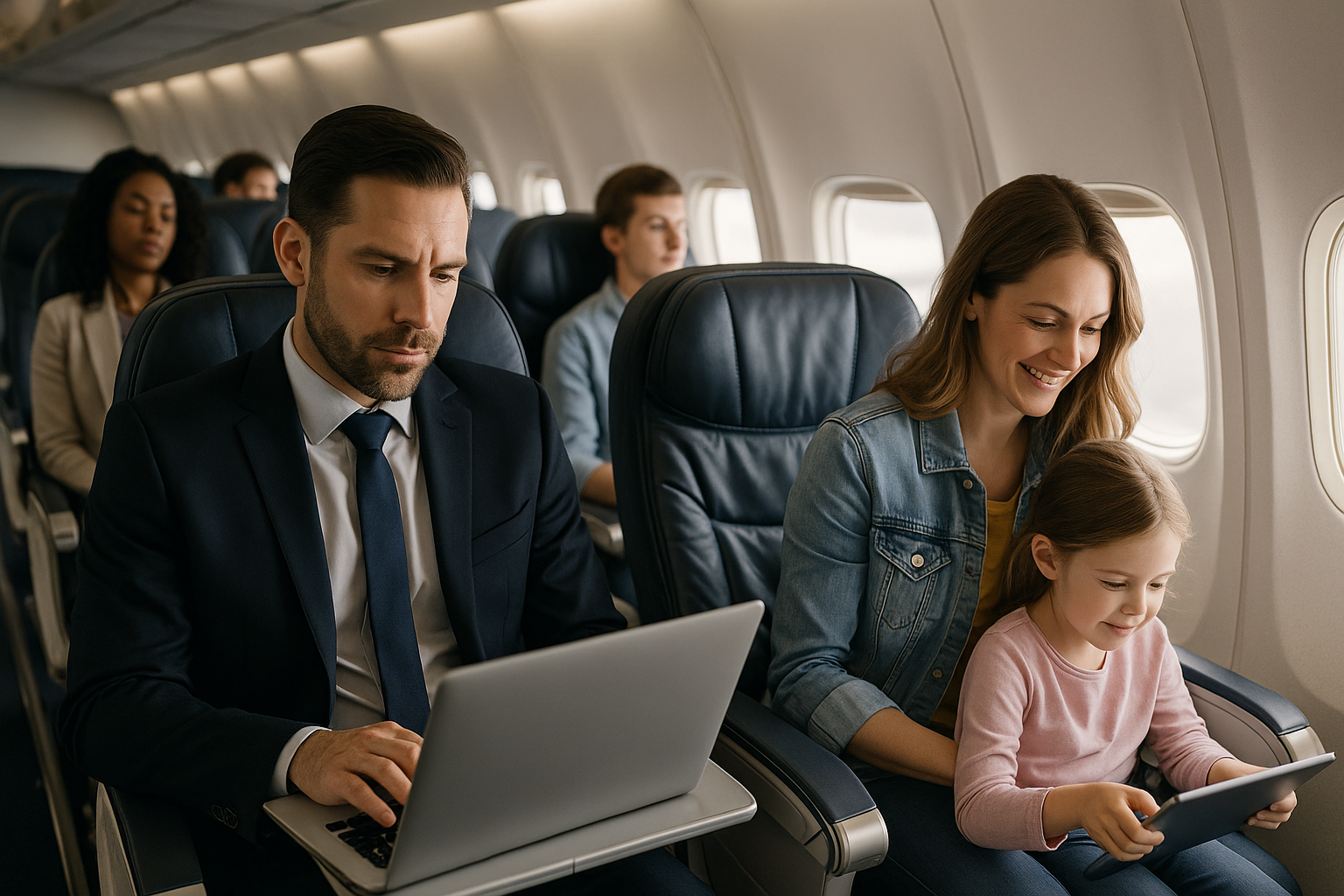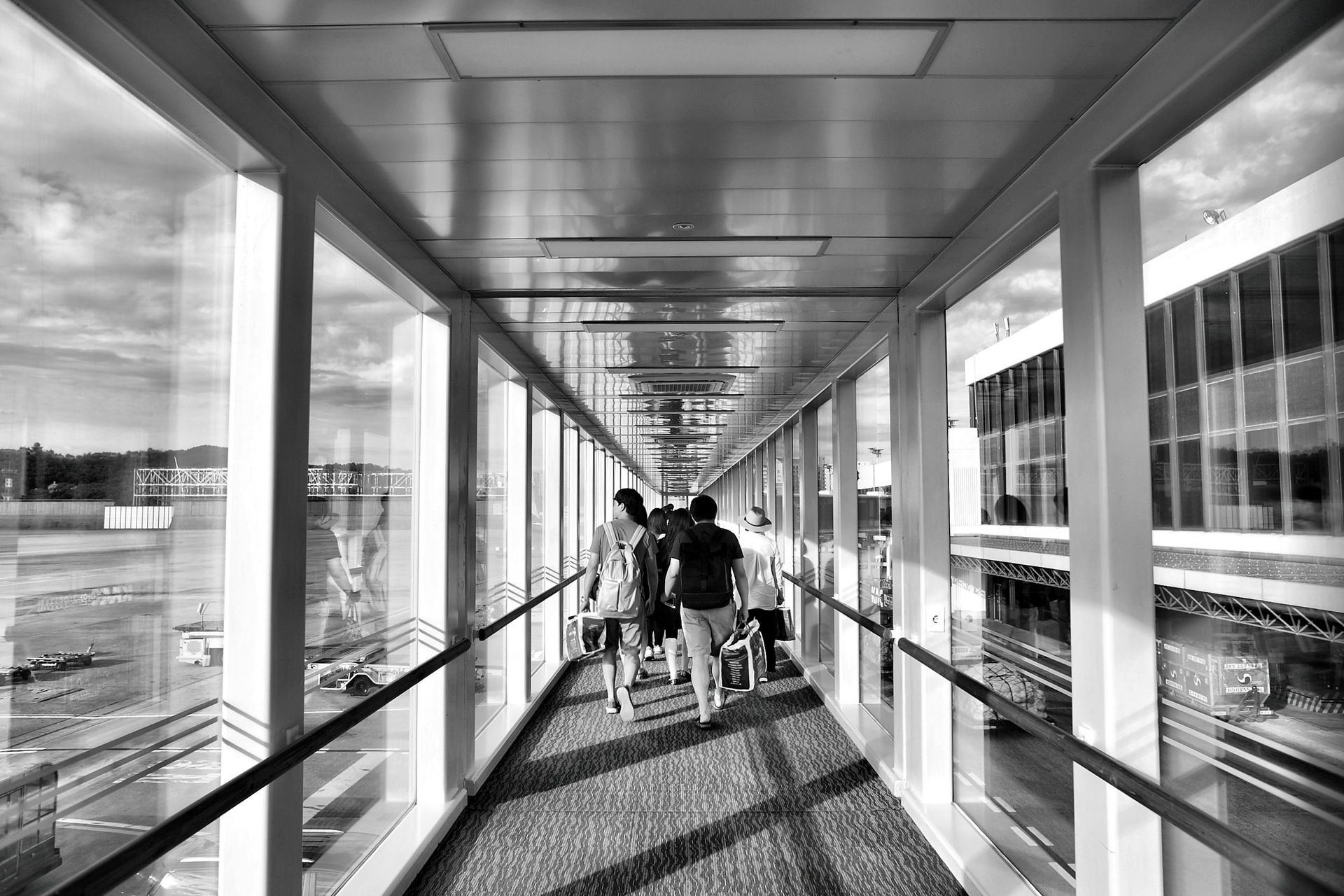The coolest people on your flight? They're 49, not 24.
By Sky Insights Global
They Set the Scene, Unnoticed
Step aboard any flight and the most culturally relevant passengers might not be the 24 year-olds scrolling TikTok. They’re the 49-year-olds, centre-stage at festivals, they’re checking into boutique hotels, mixing original Topshop with vintage Valentino and fresh Air Force Ones. Their wardrobes are now trending on Vinted. 60% of Gen Z shop from these very collections, proving that their fashion influence quietly shapes what younger generations wear.
They document their journeys with purpose, not performance. These travellers have raised families, built careers, weathered recessions, and still dance through a weekend in Ibiza or unwind on a week in Tulum. They master multi-city itineraries, spot fake service smiles, and know the A320’s best seat rows. Yet the travel industry rarely sees them.
You Know Them. You Just Don’t See Them in the Ads
They don’t need aspirational content. They embody it.
This cohort is intentional, stylish, independent, and commercially significant. Many fly solo. Some are divorced, some partnered, some exploring life on their own terms. They book direct. 44% book online. The Office for National Statistics confirms their financial weight, with weekly earnings peaking between 45 and 54 and remaining strong into the 60s. They control over half of the UK’s pension wealth.
Mintel confirms they outspend other age groups, averaging 2.5 international leisure trips per year and spending 20% more per trip than younger travellers. And they are loyal. They rebook. They recommend. They remember when service was exceptional and when it was not.
Within this group are LGBTQ+IA and ethnically diverse travellers whose global tourism market is worth over 350 billion dollars and rising. Yet their needs are rarely reflected in loyalty programmes, inflight experiences, or brand storytelling.
Redefining the Traveller Profile
This is a generation that does not recognise what “old” is supposed to look like. They grew up on Madonna, hip hop, and house and still show up for the live experience. Many shop in the same places as their children or former assistants. They are still defining what life looks like in their 50s and 60s and it rarely involves slowing down.
They take longer trips, typically seven days or more, and often stay in design led hotels or higher-end resorts. They are not chasing perks. They are looking for seamless experiences and intelligent service. They appreciate loyalty schemes but are more focused on quality than collecting points.
Health, for many, is a driver rather than a barrier. Fifteen percent of travellers over 60 cite health as a factor in choosing where and how to fly, which makes space for new kinds of service thinking.
Style and Spending Power
Despite being responsible for 40% of the UK’s grocery spend, owning 30% of smart home devices, and holding 35% of streaming subscriptions, this group is still underrepresented in advertising and product design. Youth culture dominates campaigns, app UX, and inflight experiences.
Airlines are not alone in this oversight, but the opportunity in travel is particularly urgent. These travellers notice what others miss. They are discerning. They know when a crew is stretched too thin. They remember when cabin lighting felt considered or when an app made check-in easy. These moments influence loyalty in quiet but lasting ways.
A Changing Economic Backdrop
While the spotlight shines on Gen Z and young families, their financial landscape is shifting. Wage stagnation, AI disruption, and the rising cost of living are creating instability. Holidays are shorter or delayed. Entry-level roles face automation. And yet, most airline strategy still centres on these groups.
In contrast, travellers aged 45 to 70 have housing equity, career maturity, and stronger financial buffers. They are not extravagant, they are intentional. And they are spending.
The Cost of Being Overlooked
This segment isn’t just financially secure, they’re intentional. They choose airlines based on consistency, dignity, and design that respects their time and intelligence. Ignore them, and you're not just missing a market, you're bypassing a behavioural goldmine. Their long-haul holidays, direct bookings, and preference for premium services often total £10,000 in just 2–3 years, yet they’re rarely reflected in campaigns, loyalty programmes, or service design. Visibility isn’t their priority, but value is and they remember who delivers it.
The airlines that recognise them now will lead the next wave of loyalty.
Contact team@skyinsightsglobal.com to explore how we help airlines make better decisions by understanding passengers in the moments that matter most.
#AirlineMarketing #PassengerExperience #LoyaltyStrategy #GenXTravel #SkyInsightsGlobal



